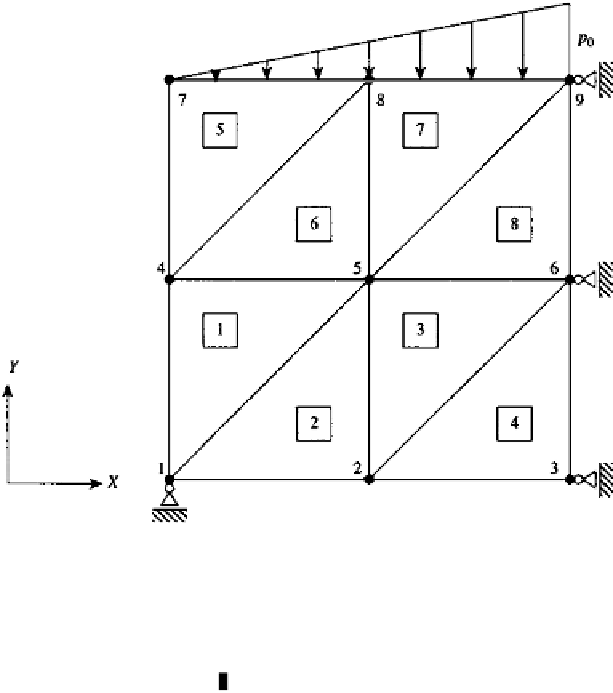Information Technology Reference
In-Depth Information
FIGURE 8.12
Finite difference mesh for the thin sheet in Example 8.6.
Observe again how similar the variational approach for finite differences is to the varia-
tional method for finite elements.
EXAMPLE 8.6 A Flat, In-Plane Loaded Structure
Consider the in-plane loaded flat structure of Chapter 6, Example 6.2. Use variationally
based finite differences to calculate the displacements of the nodal points.
Because of the symmetry of the loading and the supports, as well as the structure, consider
only half of the structure, with the loading and supports of the form of Chapter 6, Fig. 6.14b.
Discretize the model with nine nodes and eight triangles as shown in Fig. 8.12. Treat this
as a two-dimensional plane stress problem, and use the principle of virtual work. For each
triangle, the virtual work is given by (Chapter 2, Example 2.5)
V
δ
T
σ
dV
u
T
p
V
dV
u
T
p
ds
δ
W
=
V
δ
−
−
S
p
δ
A
δ
T
s
dA
u
T
p
V
dA
u
T
p
ds
=
−
A
δ
−
S
p
δ
(1)
where
s
is defined in Eq. (2) of Chapter 2, Example 2.5. Neglect the body force
p
V
, and sub-
stitute the kinematical relations (Chapter 1, Eq. 1.24) and material law (Chapter 1, Eq. 1.39)
for the two-dimensional plane stress problem in (1)
u
T
u
D
T
ED
u
u
dA
u
T
p
ds
δ
W
=
A
δ
−
S
p
δ
T
EDu
dA
u
T
p
ds
=
A
δ(
)
−
S
p
δ
Du
(2)
















Search WWH ::

Custom Search